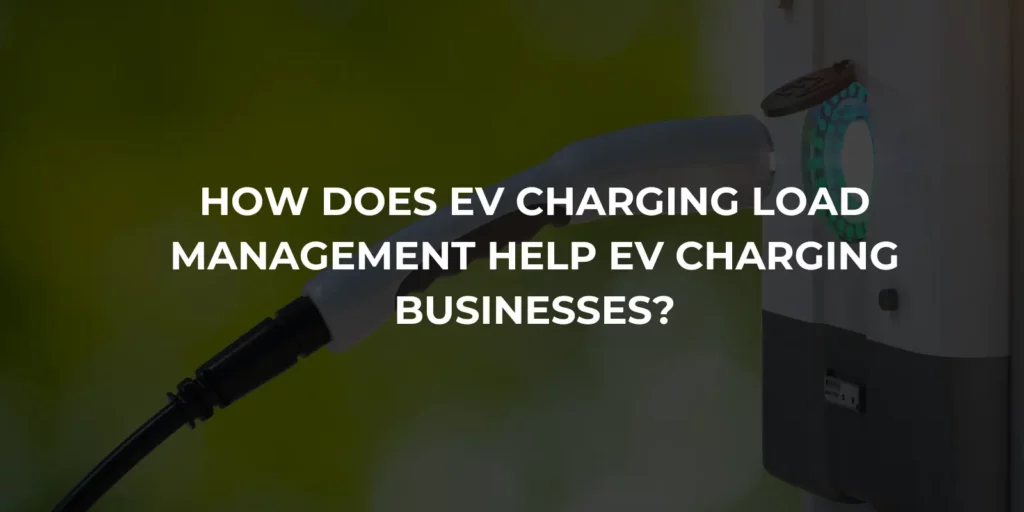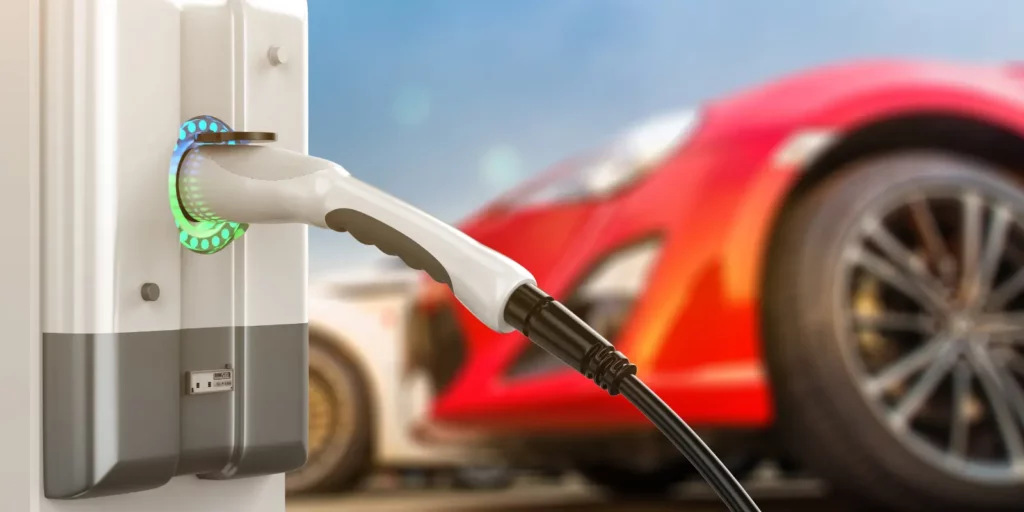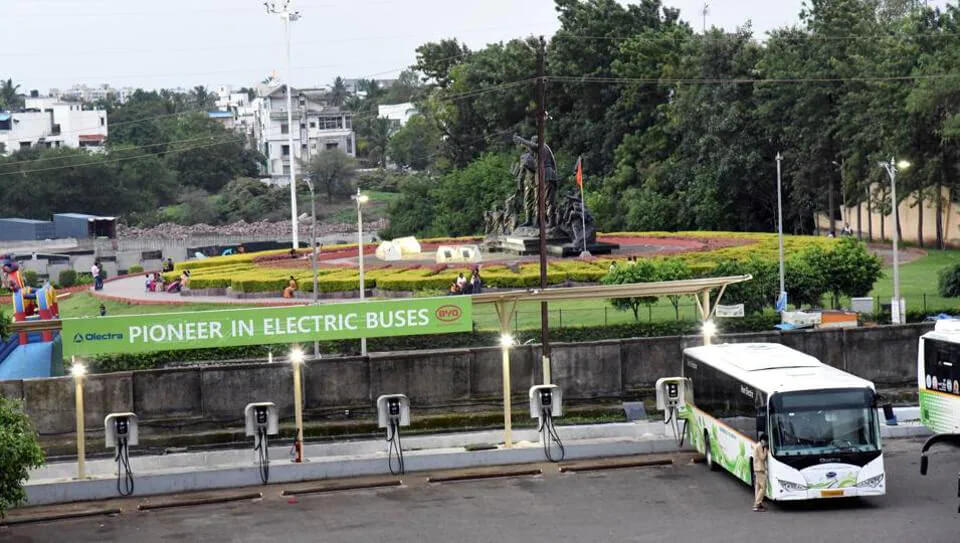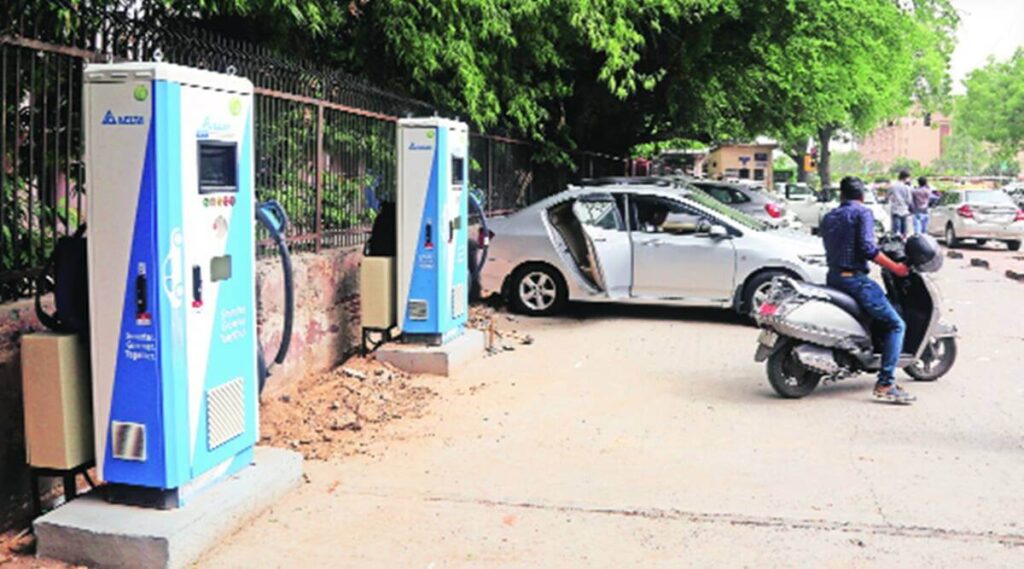
The transportation landscape is shifting significantly with the increasing popularity of electric vehicles (EVs). These environmentally friendly cars are rapidly gaining traction due to concerns about climate change and advancements in battery technology. As a result, the demand for convenient and reliable EV charging infrastructure is growing exponentially.
However, simply installing charging stations is not enough. To ensure a smooth and sustainable operation, EV charging businesses need to consider a crucial element: EV charging load management. EV charging load management is a system that optimizes the flow of electricity to charging stations, preventing grid overload and ensuring efficient charging for EVs.
Load management enables control over the electricity usage of multiple electric vehicle charging stations connected to the same circuit. The system automatically balances the electricity usage of each charging station according to the chosen protocol. This technology plays a vital role in optimizing the flow of electricity to charging stations, ensuring a positive impact for both the business and the power grid.
Challenges Of Unmanaged EV Charging
Imagine a neighborhood during the hottest summer day. Everyone cranks up their air conditioners, placing a heavy burden on the local electricity grid. This scenario is precisely the concern with unmanaged EV charging, particularly during peak demand periods.
Peak demand refers to the times when electricity consumption is highest, typically in the afternoon or evening. Currently, most home and business charging happens without any coordination. If a large number of EVs plug in at once during peak hours, it can significantly strain the power grid.
Data from ScienceDirect suggests that Peak electricity demand could increase by up to 20% by 2030 if electric vehicle adoption is not accompanied by effective load management strategies. This surge can lead to several negative consequences:
- Overloaded Circuits: Just like overloading a household circuit with too many appliances, a sudden influx of charging EVs can overload transformers and power lines. This can cause them to overheat and potentially fail.
- Power Outages: Overloaded circuits can lead to entire neighborhoods or regions experiencing power outages. This disrupts daily life and can be detrimental to critical services reliant on electricity.
- Increased Energy Costs: To meet the sudden demand during peak hours, utilities may need to rely on expensive backup generators. These increased costs are often passed on to consumers, resulting in higher electricity bills for everyone.
Note: Managing the load of EV charging is crucial to avoid up to 50% peak load growth from unmanaged charging.

8 Ways EV Charging Load Management Helps EV Charging Businesses
Electric Vehicle (EV) charging load management plays a crucial role in supporting the growth and efficiency of EV charging businesses by optimizing power distribution and ensuring reliable charging services. Here is how EV charging load management benefits EV charging businesses:
- Cost Savings and Infrastructure Optimization: EV charging load management enables businesses to avoid costly infrastructure upgrades by efficiently distributing power among charging stations. This results in reduced utility costs for charger owners and more affordable charging prices for EV drivers.
- Fast and Convenient Charging: By optimizing energy efficiency, EV charging load management reduces wait times and speeds up the charging process for EV drivers, enhancing their charging experience.
- Reliability and Preventing Overloads: Load management prevents the overloading of electrical panels and local utility grids, ensuring consistent and reliable electricity flow without disruptions like power outages.
- Scalability and Flexibility: Businesses can scale their EV charging offerings at a fraction of the cost without straining their property’s electrical panel or the local grid, allowing for easy expansion of charging infrastructure.
- Enhanced Customer Experience: Load management ensures that customers can charge their vehicles fully and efficiently, promoting customer satisfaction and loyalty.
- Optimized Charging Infrastructure: Load management software can improve the efficiency of the EV charger network by reducing the number of chargers needed while maintaining optimal performance.
- Adaptability to Different Business Types: Various businesses like car rental companies, ride-sharing services, public charging stations, restaurants, convenience stores, gyms, and workplaces can benefit from load management to control electricity flow during charging sessions
- Employee Benefits and Private Residences: Load management can be part of employee benefits for EV users in companies with large EV fleets, ensuring that the system remains stable and efficient. It can also be used in private residences to manage EV charging effectively.
EV charging load management software is a critical tool for EV charging businesses to optimize their operations, reduce costs, enhance customer experience, and ensure the reliability and scalability of their charging infrastructure.

How EV Charging Load Management Works?
Electric Vehicle (EV) charging load management is a critical process that optimizes power distribution among charging stations to balance energy demand throughout the day efficiently. Here is how EV charging load management works:
- Balancing Energy Demand: EV charging load management involves balancing the demand for energy across various sites like individual charging ports, fleet depots, residential buildings, or public parking lots
- Optimizing Charging Efficiency: Load management reduces energy usage during peak demand periods, alleviating stress on the grid while ensuring optimal EV charging
- Equilibrium At Macro And Micro Levels: At a macro level, load management creates equilibrium among power demand across multiple sites, while at a micro level, it shifts charging sessions to times when energy is more cost-effective
- Dynamic Load Balancing: Load balancing systems instruct EV chargers to deliver the right amount of energy, offsetting peak demand and adjusting energy consumption in real-time based on needs
- Software Communication: Load management software such as YoCharge’s EV Charging Load Management Software constantly communicates with electricity infrastructure, charge points, and charging EVs to ensure efficient power distribution and charging operations
- Vendor Solutions: Well-known vendors providing load management software include YoCharge, Picafuel, Tridens Technology, eDRV, and GreenFlux
- Types of Load Sharing: Load-sharing EV chargers can provide power through equal distribution or first-in, first-charged methods to ensure efficient and fair energy allocation among multiple chargers.
The Final Words
The rise of electric vehicles (EVs) is driving the need for efficient EV charging infrastructure. However, simply installing charging stations is not enough. EV charging businesses must also consider load management to balance electricity usage among multiple stations.
Unmanaged EV charging during peak demand periods can strain the power grid and lead to overloaded circuits. Effective load management strategies are crucial to avoid negative consequences and optimize electricity flow to charging stations.
If you are a business or enterprise, if you want to manage your EV charging load – Try YoCharge’s EV Charging Load Management Software to run your business smoothly. Take your business to the next level with YoCharge!



